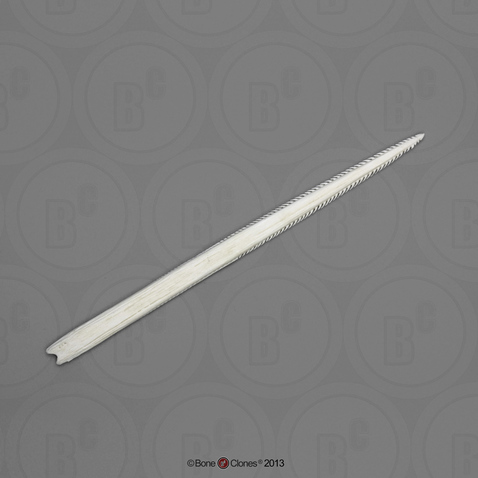-
Fields of Study
- K-12 Education
- Advanced Anatomy
- Forensics
- Physical Therapy
- Primate Locomotion
- Non-primate Locomotion
- Biological Anthropology
- Paleontology
- Bioarchaeology
- Marine-Aquarium
- Veterinary
-
Zoology
- All Zoological Items
- Endangered Species
- Skulls
- Skeletons
- Cranial Elements
- Postcranial Elements
- Eggs
- Limbs
- Teeth & Fangs
- Claws & Talons
- Brains & Endocasts
- Life Casts
- Pathology & Trauma
- Wildlife Forensics
- Sets
- Bird Sets
- Accessories
- Birds
- Mammals
- Reptiles & Amphibians
- Fish
- Sharks & Rays
- Turtles & Tortoises
- Anatomy for the Artist
- Decor
- Veterinary
- Elements
- Pathology & Trauma
-
Sets & Series
- Natural History Gift Ideas
- Decor
- Scale & Sculpture
- 3D Scanned & Printed
- Bone Boxes
- Locomotion Sets
- Forensic Sets
- Advanced Anatomy Sets
- Physical Therapy Series
- Fetal Sets
- Economy Series
- Zoology Sets
- Bird Sets
- Claw & Talon Sets
- Tooth & Fang Sets
- Primate Skull Sets
- Fossil Hominid Sets
- B.I.O.P.S.I. - Babiarz Institute
- Maxwell Collection
- Bergdorf Goodman Windows
- Accessories
- New Products
-
Our Company
- News & Specials
- Printable Handouts
- About Us
- Why Choose Bone Clones
- Bone Clones in the News
- Mission
- Contact Us
- Privacy and Security
- FAQs
- Testimonials
- Community Outreach
- Legal/Copyright
- Flyers
- Choosing Original Specimens
- Museum Exhibitions
- Natural History Gift Ideas
- About the Economy Series
- Acknowledgements
- Ordering & Delivery
- Warranty
- Refund/Return Policy
- Price List at a Glance
- Our Catalog
- Osteological Evaluation Reports
- About 3D Printing
- Sawyer & Maley Neanderthal Reconstruction
- Site Introduction
- Newsletter Archive
-
Human Anatomy
- All Human Anatomy
- Human Skulls
- Human Skeletons
- Head & Neck
- Postcranial Elements
- Advanced Anatomy
- Physical Therapy / Joints
- Human Brains & Endocast
- Human Life Casts
- Maxwell Museum
- Sets & Series
- Accessories
- Osteological Evaluation Reports
- Featured
- Adult Human Anatomy
- Adolescent Human Anatomy
- Child Human Anatomy
- Fetal Human Anatomy
-
Zoology
- All Zoological Items
- Endangered Species
- Skulls
- Skeletons
- Cranial Elements
- Postcranial Elements
- Eggs
- Limbs
- Teeth & Fangs
- Claws & Talons
- Brains & Endocasts
- Life Casts
- Pathology & Trauma
- Wildlife Forensics
- Sets
- Bird Sets
- Accessories
- Birds
- Mammals
- Reptiles & Amphibians
- Fish
- Sharks & Rays
- Turtles & Tortoises
- Fossil Hominids
- Paleontology
- Non-human Primates
- Forensics
All items sold on this website are replicas; no real/natural bone is available on this site. Bone Clones® are 1:1 scale unless stated otherwise. All Bone Clones® products are made in the USA.
 ALSO SEE:
ALSO SEE:
Stingray Tail Spine
KO-098 $52.00
The stingray is mostly docile, very rarely inflicting serious injuries on humans. When profoundly disturbed, it will swing its tail with enough force to pierce flesh and, at the same time, release poison. Functioning much like a fish hook, the tail's many barbs keep the spine in place while the poison flows into the wound.
Stingray spines are composed of tissue called placoid scales. Placoid scales are similar in composition to teeth, with a blood-supplied pulp cavity and an exterior layer of dentine. Unlike cartilage, which comprises most of the skeleton, this tissue does not break down over time.
The original of this specimen is from Thailand. We are grateful to Dr. Gordon Hubbell, who generously loaned us this specimen.
| Scientific Name | Catalogue # | Size | Price |
| Dasyatis sp. | KO-098 | 8 ½" Long | $52.00 |
Related Products:
-
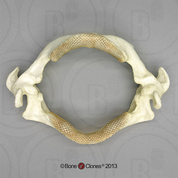 Stingray Jaw
Stingray Jaw -
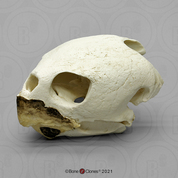 Loggerhead Sea Turtle Skull
Loggerhead Sea Turtle Skull -
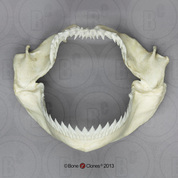 Kitefin Shark Jaw
Kitefin Shark Jaw -
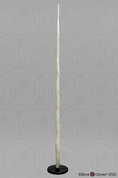 Narwhal Tusk, 90 Inches
Narwhal Tusk, 90 Inches -
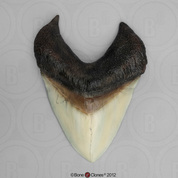 7 1/8 Inch Megalodon Shark Tooth
7 1/8 Inch Megalodon Shark Tooth -
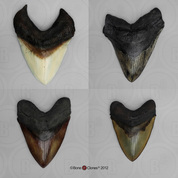 Megalodon Shark Teeth Set of 4 Giants
Megalodon Shark Teeth Set of 4 Giants -
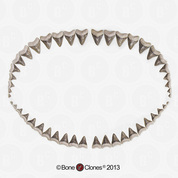 Megalodon Shark Teeth Set of 46
Megalodon Shark Teeth Set of 46 -
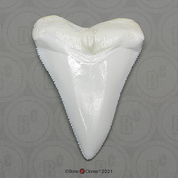 Great White Shark Tooth
Great White Shark Tooth -
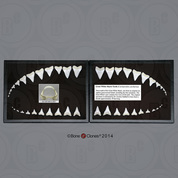 Great White Shark Teeth First Row
Great White Shark Teeth First Row -
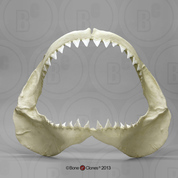 Great White Shark Jaw
Great White Shark Jaw -
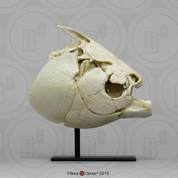 Pacu (Tambaqui) Skull
Pacu (Tambaqui) Skull -
 False Killer Whale Tooth
False Killer Whale Tooth -
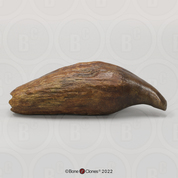 Fossil Giant Sperm Whale Tooth
Fossil Giant Sperm Whale Tooth -
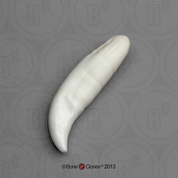 Killer Whale Tooth
Killer Whale Tooth -
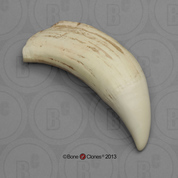 Modern Sperm Whale Tooth
Modern Sperm Whale Tooth
Newsletter Signup
9200 Eton Ave.
Chatsworth, CA 91311 USA
© 1992-2025 Bone Clones Holdings. All Rights Reserved.
Customer Service
© 2025 BONE CLONES HOLDINGS / Made by MEV




